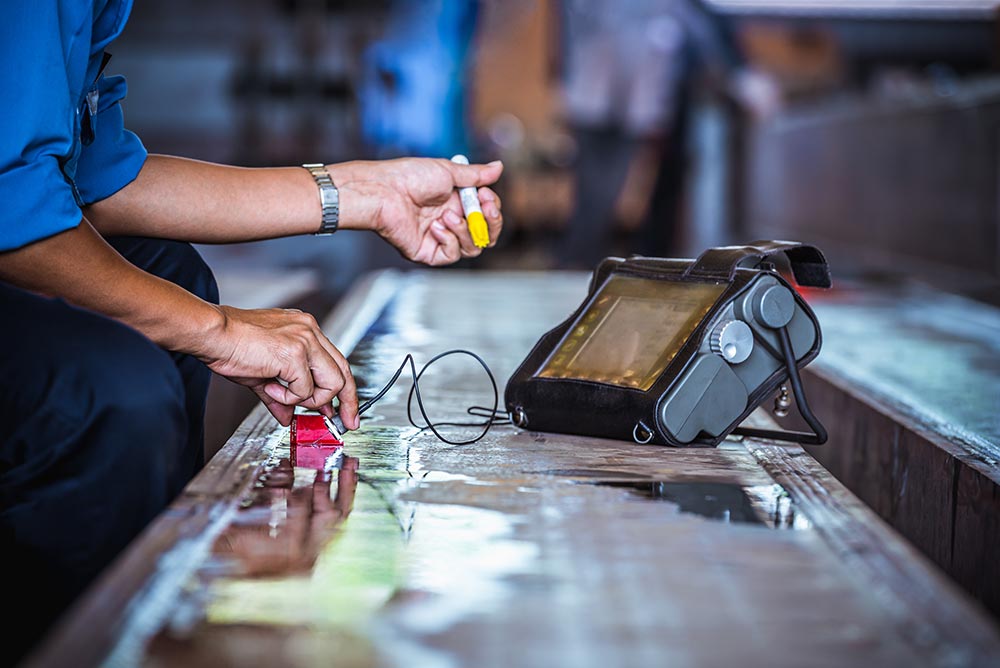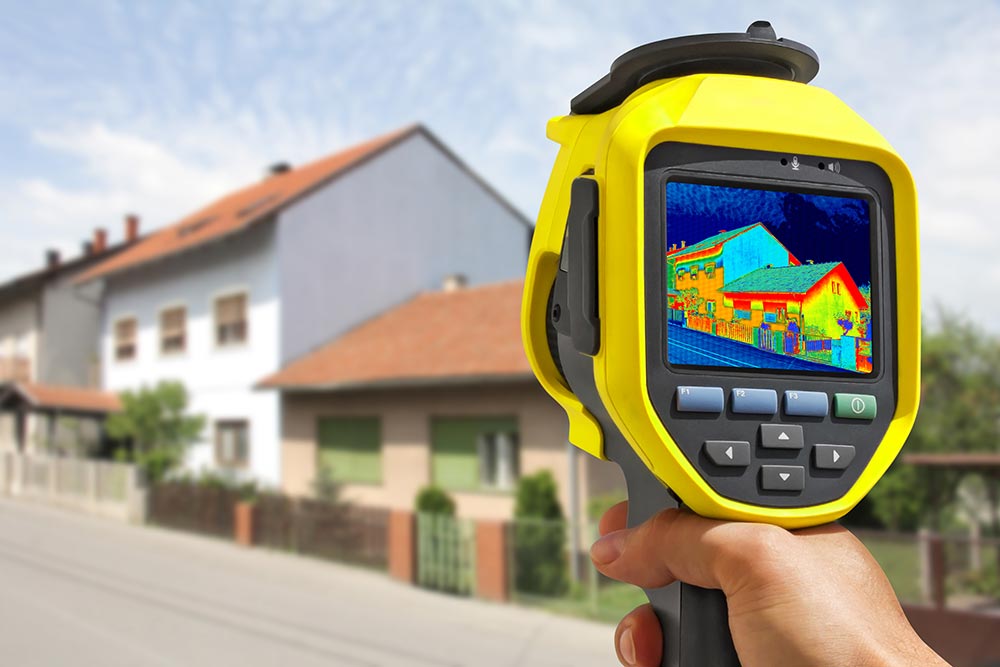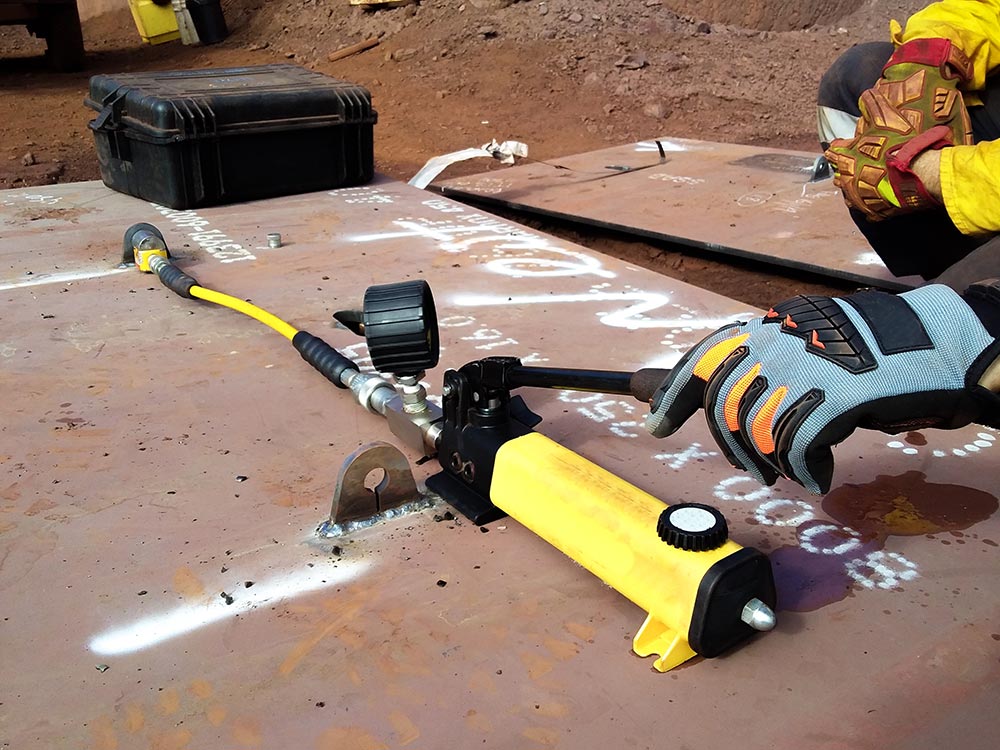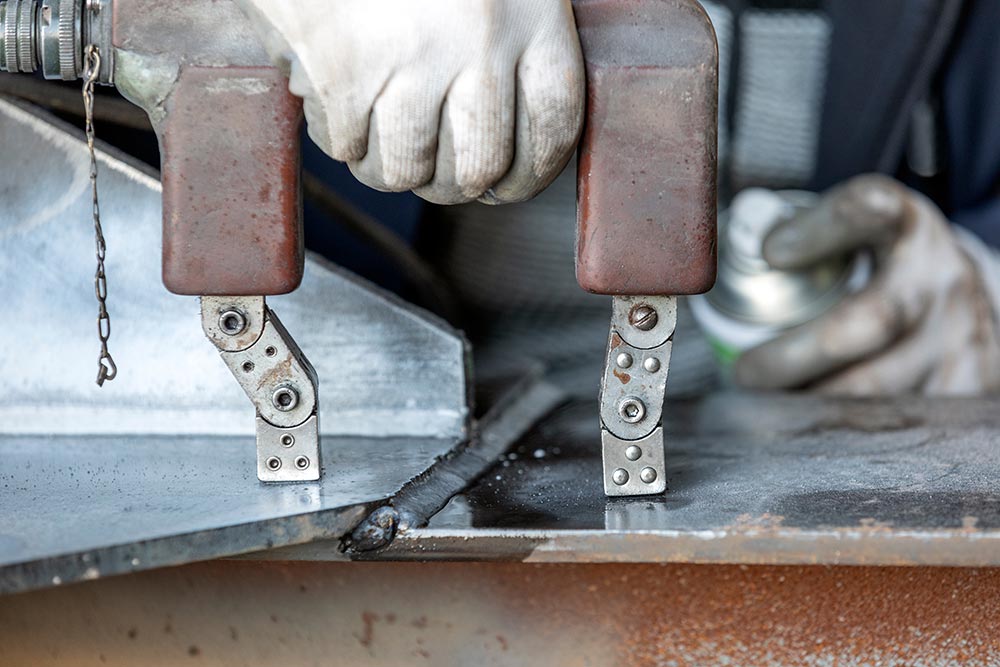
Schmidt’s Rebound Hammer is a nondestructive testing apparatus : the rebound of the spring driven mass is measured after its impact with a prepared concrete surface. The output of the rebound hammer is referred to as rebound number and are correlated with surface hardness of concrete. Often used in conjunction with the Ultrasonic Pulse Velocity Test readings to extrapolate the compressive strength interpretations.
Ultrasonic pulse velocity (UPV) test is another popular nondestructive test used to examine the homogeneity, quality, cracks, cavities, and defects in concrete. Its principle is simple : If there is a crack in concrete, void or flaw inside the concrete which comes in the way of transmission of the ultrasonic pulses, the pulse strength is attenuated and it passes around the discontinuity, thereby making the path length longer. Consequently, lower velocities are obtained. Contact us for how to combine the RH UPV tests for accuracy in compressive strength estimation.


B-bams uses thermography , a non-destructive testing method , to detect and measure small temperature differences to help find deterioration in assets and plant sites. Also to identify sources and locations of seepage, thermography can also support the maintenance of industrial plants and equipment with its fast and cost-effective application. Call us for more…
The half-cell potential test is the only corrosion monitoring technique standardized in ASTM C876 – 15: Standard Test Method for Corrosion Potentials of Uncoated Reinforcing Steel in Concrete. It is used to determine the probability of corrosion within the rebar in reinforced concrete structures. Often used in conjunction with a Resistivity Test, which determines the rate of corrosion. Call us for more…


The Surface Resistivity Test can be used to evaluate the electrical resistivity of water-saturated concrete to provide a rapid indication of the concrete’s resistance to chloride ion penetration. Often used along with HALF CELL Test. Call us for more…
Carbonation testing provides a means with which we can determine the extent of carbon dioxide infiltration into the concrete. The process is similar to chloride ion testing where a sample is either removed, either by coring or drilling and the sample is tested by the application of a revealer. Since carbonation causes erosion of concrete’s alkalinity and hence corrosion, this chemical testing is one of the most required and popular NDT methods employed.


This test measures the percentage of stretch from the original length of the steel to the point of failure, showing how ductile the steel is. Ductility is the capability of the steel to be stretched out without becoming more brittle or weaker in the process.
AT B-bams drones are used to carry out real-time inspections of high risk areas so you don’t have to send people to them. This helps improve health and safety on a site. Capturing high quality photos and viudeos of inaccessible and risky to reach areas to assess structure and seepage condition, is among the primary uses for which we use drones.


Our Profometer testing a non-destructive testing technique used to detect location and size of reinforcements and concrete cover quickly and accurately. A small, portable, and handy instrument which is known as profometer or rebar locator, is used in this test.
Crack microscope is a high definition device which we use for measuring crack widths both in concrete and other structures like masonry walls. Consists of an adjustable lamp unit and a knob for focusing the image. The 360° turning ability of the eyepiece enables the alignment with the direction of the crack or pitch subject to examination. The battery operated microscope has 40x magnification and 4 mm measuring range with 0.02 mm subdivisions.


Impact Echo is a non-destructive testing (NDT) method for structural integrity testing of concrete and masonry structures. This method was first developed to locate flaws and voids in plate-like concrete structures (such as bridge decks, retaining walls, and slabs). Impact-echo is based on the use of transient stress waves generated by elastic impact.
Ground Penetrating Radar (GPR) is a well-established method of monitoring civil structures such as bridges, tunnels, and buildings. GPR is also used as part of a nondestructive detection method to identify underlying features or buried services.


This method is used for the detection of surface and near-surface flaws in ferromagnetic materials and is primarily used for crack detection in PEB Structures and components. The specimen is magnetised either locally or overall, and if the material is sound the magnetic flux is predominantly inside the material.
The Spectral Analysis of Surface Waves (SASW) method is used on structural elements to estimate crack and damage depths and to measure relative concrete quality. SASW can be used to: Determine crack tip, fire damage and freeze-thaw damage depths.


B-bams uses LIDAR Scanning for reverse engineering services which can rapidly produce CAD for prototype and legacy parts. The output can either be 100% accurate to the physical part’s dimensions (as-built), or it can reflect the part’s intended design (design-intent). The resulting files can be delivered in any required CAD or graphic format and be used for inspection, mold and pattern making, tool path creation, tooling verification or additive manufacturing.
Suite 52106,
Nikoo Phase 1,
Bhartiya City,
Hegde Nagar,
Bengaluru 560045
QUICK ENQUIRY